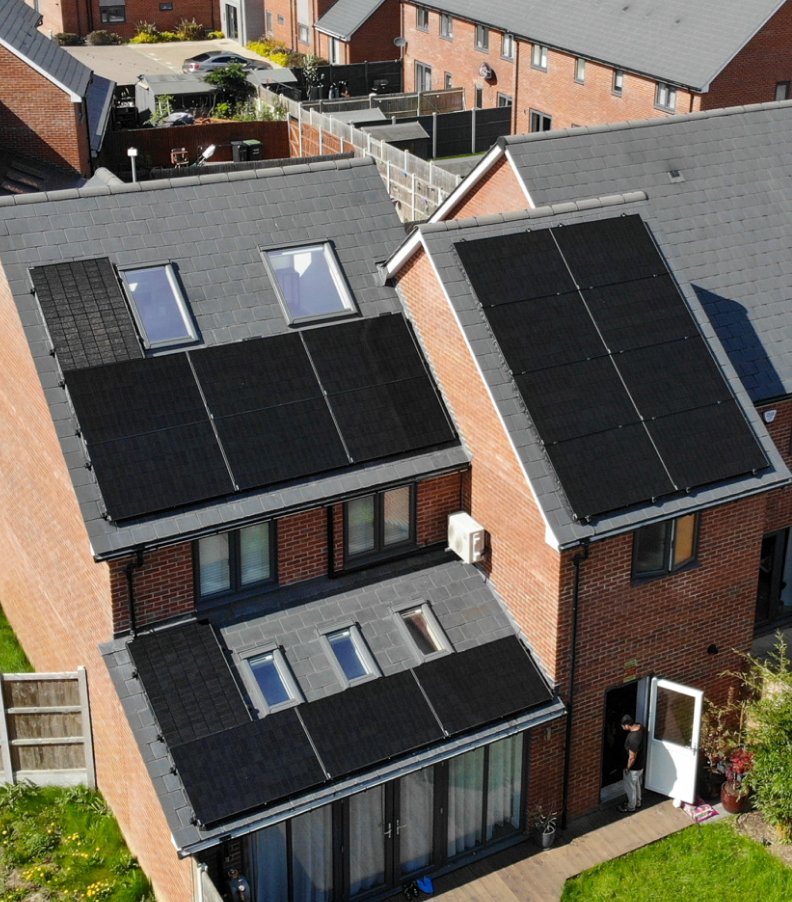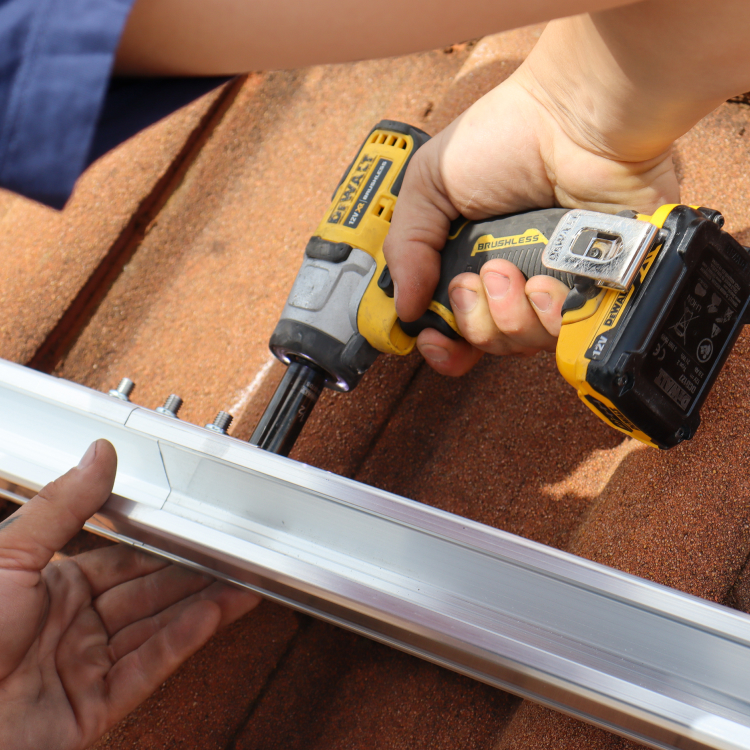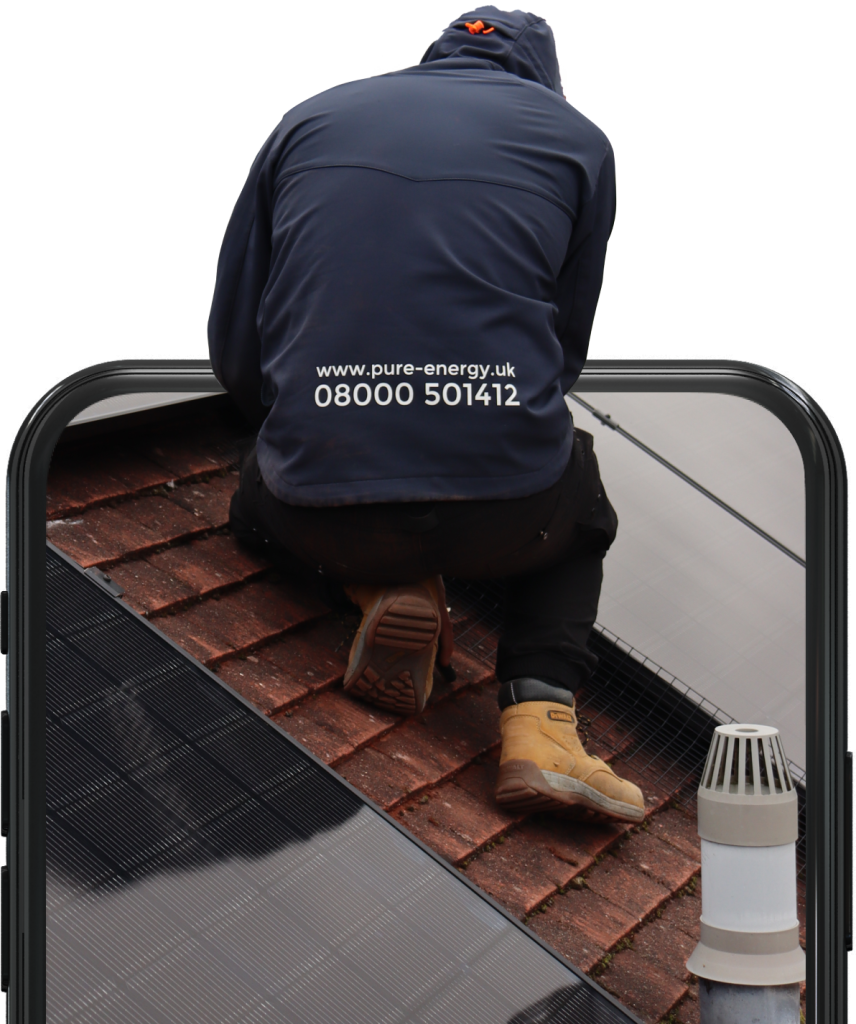
Energy Independence.
Clean. Green. Reliable.
Electricity generation directly from the sun. Energy bills rise daily. Luckily, the sun does too.
Carbon-crunching tech
Reduce your reliance on the unreliable.
Cut your electricity usage from the grid
and use a sustainable method instead.
How do Solar Photovoltaic panels work?

A solar photovoltaic panel is made up of several layers of semi-conducting material. This material is most commonly silicon. When light shines onto the material, a flow of electricity is created. Solar Panels do not need direct sunlight to produce energy.
Systems can produce electricity during the Winter months and on cloudy days. The amount of electricity a panel can produce is determined by the strength of the UV light, (sunshine).
Solar radiation is light, otherwise known as electromagnetic radiation. This radiation is emitted by the sun. Every place on Earth encounters a level of sunlight throughout the year, but the level differs based on the location.
Some areas on Earth receive more solar radiation than others. Solar photovoltaic panels absorb the solar radiation and turn it into usable energy.
“The amount of sunlight that strikes the earth’s surface in an hour and a half is enough to handle the entire world’s energy consumption for a full year.” – Solar Energy Technology Office
1.5 million homes in the UK now have
Solar panels installed. Are you next?
The Pure Way
Modules, mounting and inverters, we only use the best in class, ethically sourced materials. Each and every product is meticulously hand-picked, with quality in mind.
Bullet-proof warranties to last your systems lifetime. Insurance-backed workmanship cover for added peace of mind.
Offering a full turnkey service using industry leading installation methods.
All projects are completed by qualified, experienced trades people, adhering to all relevant health and safety protocol.
From design to planning, installation to commissioning, we provide a consultative approach with non-bias, impartial advice.


Integral System Information
When it comes to Solar PV systems, there are a lot of key terms and phrases. Get to know the most important ones below.
The Smart Export Guarantee (SEG) enables small-scale low-carbon generators to receive payments from electricity suppliers for electricity exported to the National Grid, providing certain criteria are met.
Exporting power to the grid? Signup for an SEG tariff & get paid for what you export.
Distribution Network Operators (DNOs) are licensed companies that own and operate the network of cables, transformers and towers that bring electricity from the national transmission network to businesses and homes.
A notification or application is submitted to your DNO prior to an installation. This enables you to have the equipment installed and export energy to the grid.
The size of a Solar Photovoltaic system determines the certificate that you will be issued. The G98/G99 approval is granted by your District Network Operator (DNO) & must be processed pre-installation.
G98 – Systems up to 3.68kW
G99 – Systems above 3.68KW
Systems above 3.68kW may require changes to the local network, due to the amount of power being processed by your potential system.
In some cases, systems have export limitation programmed to comply with DNO requests.
Chipstead, Surrey
Redruth, Cornwall
High Wycombe
Epsom, Surrey
Dartford, England
Frequently Asked Questions
Solar PV (Solar Photovoltaics) is the generation of electricity via energy from the sun. Light is converted into electricity using semiconducting materials that exhibit the PV effect. By installing Solar Panels on your property, you can generate clean, green energy for your home or business.
Solar Panels absorb sunlight through photovoltaic cells. This generates DC current (direct current). DC current cannot be used directly within your property, so a Solar Inverter converts the DC power into AC power, (alternating current). AC energy can flow through your property and be assigned to devices where needed. Any excess energy can be captured in a battery storage system or exported back to the grid.
By generating energy through Solar Panels, electricity is produced at a zero carbon level. This means energy produced does not contribute to the ever growing issues with climate change. The more energy you produce via PV panels, the less reliant you become on the grid. Less energy purchased from the grid ultimately leads to increased savings and lower electricity bills.
Unfortunately, all good things must come to an end, as was the case for the governments feed-in tariff incentive for installing solar panels. The FIT scheme ended in April of 2019 and is no longer offered to households or businesses for installing PV. However, there are new incentives offered to customers in 2022 such as 0% VAT on Solar PV installations.
Yes you can. Electricity providers now offer an SEG tariff (smart export guarantee), allowing you to earn off of energy exported back to the grid. As of Summer 2022, providers such as Utility Warehouse and OctopusEnergy offer the most competitive SEG rates, in and around 5.5p to 7.5p per kWh.
Depending on the size of your property and the roof-space available, you can add more photovoltaic panels to an existing system. If you are a part of the FIT scheme, you are still eligible to add more panels to your property, through installing a new Solar Inverter. Ultimately, installing new panels depends on the space available at the property.